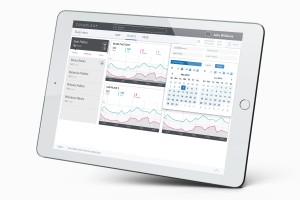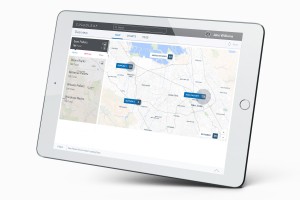Building cross-boundary collaborative solutions for next-gen IoT-enabled operations

Over the past few decades, IIoT technologies have crept into virtually every aspect of industrial automation and operations. Seamless connectivity, technology-agnostic interoperability and data-uniformity have enabled operators to easily monitor, manage and leverage data from any number of proprietary assets and processes in ways that, before, were simply cost prohibitive.
During this time, we’ve also seen the influence of the IIoT extend beyond the factory floor to the cloud. The omnipresent IoT liberates inexhaustible quantities of real-time data and metrics that flow cloud-bound to feed insatiable analytics, predictive AI and enterprise data applications; a holy grail manifested in the form of absolute (almost clairvoyant) awareness, intelligence and knowledge… at least this was the plan, says Nitesh Arora, head of Marketing of Cloudleaf.
Pretty sensational stuff, so let’s come down to earth and talk facts:
All too often, these IoT solutions were designed, implemented and managed on the underlying principle of providing efficiency through automation. In the race to digitise, far less thought was given to the real value of the IoT and its ability to help enterprises future-proof their capital investments by providing the means (not the end) to solving real-world business challenges.
As a matter of course, many enterprises implemented technology simply for technology’s sake and after the novelty wore off, operators were left with yet one more system to learn, maintain and pay-off. Even under the best scenarios, operation managers found that their IoT footprint was anything but low-overhead; the majority of IoT solutions on the market require significant allocation of implementation, integration and training resources.
More importantly, these solutions added unnecessary operational complexity that forced enterprises to shift focus from their core-competencies, building collaborate partnerships, managing staff, enhancing customer user-experiences and maintaining government mandated safety standards.
Today, few industrial IoT solutions are engineered from the ground-up to solve business challenges and uncover opportunities in a sustainable value-added way, and if you ask operation managers what their top 4 pain-points are, they’ll likely say:
- I don’t have a way to efficiently orchestrate our complex workflows of materials, tools and people,
- I can’t track the location or condition of my assets, or prevent them from getting lost or stolen
- I have no idea how to leverage our partner relationships and tie into their inventory systems
- I don’t have a good way of keeping my operational costs in check
Fortunately a new-breed of IoT solutions has recently come on-line offering a collection of robust technologies that go the extra mile to provide simplicity and the sustainable industry-centric solutions operation managers are looking for. So before we get ahead of our skis, let’s take a look a 4 essential ingredients that go into successful IoT asset tracking and workflow optimisation solutions:
Robust and battle-tested tech
IoT solutions must be able to rely on technology that is robust, interoperable, cost-effective and offers high-availability functioning. By equipping assets with unobtrusive medium-range wireless transmitters (such as Bluetooth-low-energy), plant managers can quickly build smart networks of IoT-capable sensors, gateways and channel and real-time operational data into their cloud applications.
This provides managers with virtually unlimited control over large groups of assets and given a plethora of different sensors — capable of measuring position, vibration, temperature and shock — virtually endless monitoring capabilities. But the real value lies in the ability of cloud applications to transform this digital metadata into actionable insights.
Hardware, connectivity and applications must work in unison and provide managers with ergonomically designed dashboards that clearly display alerts, notifications, metrics, trends, analytics and KPIs related to inventory, product quality, predictive maintenance, audit and regulatory compliance. And all this well-orchestrated interoperability requires front-loading some nifty behind-the-scenes programing into the solution. This means that the solution must offer an extensive library of APIs, SDKs and pre-built connectors capable of providing easy integration touch-points with existing enterprise systems — including SCM, ERP, MRP, MES and big data analytics.
By relying on proven IoT-enabled technologies, enterprises are able to configure highly granular industrial operations that function at the individual asset, process and workflow level. Each component has its part to play and each is critical to ensuring the efficient flow of raw materials, tools, sub-assemblies and WIP goods.
Unlocking true cross-boundary asset and workflow management
Enterprises are increasingly looking for industrial IoT solutions that solve a specific set of operational challenges but not in a vacuum. Asset tracking and workflow optimisation solutions must efficiently addresses operational and supply-chain challenges but also provide operators visibility of the asset ecosystem well beyond the limits of their four walls. This is an important point, as up until now, operators had very little awareness of the location, status or number of assets arriving in-bound, or flowing out-bound.
The logistical implications of providing real-time materials-management, inventory control, workflow planning and staffing, are profound and far-reaching. Even more fundamental is the ability to foster synergies between stakeholders. Allowing asset and process management functions to transcend 3rd party systems help to facilitate development of best-of-breed solutions for suppliers, distributers, and customers.
IoT solutions built on secure open-standard frameworks offer ubiquitous connectivity, seamless interoperability, and promote stakeholder collaboration, are rapidly gaining dominance in the industrial IoT operations market.
Engineering industry-centricity into the solution
The promise of the IoT lies in its ability to enable enterprises to focus on their core-competencies and by doing so, unleash their potential. This requires a solution engineered around the needs of the enterprise customer, their industry, and stakeholder ecosystems. The result is a set of purpose-built solutions that adopt the industry language, concepts, and metrics, customers uses every day.
This purposeful approach has the effect of reducing complexity, shortening the learning curve, and enabling the enterprise to focus on its core-competencies, and not get bogged down trying to understand how to implement, use, and maintain the IoT. The result is a simple elegant IoT-enabled platform that’s easy to use, value-added, and keenly focused on solving a narrow set of business challenges.
This compartmentalised approach yields purposeful high-visibility asset tracking solutions that utilise the latest real-time connectivity technologies. This helps operators keep an eye on their asset ecosystems, in-house, in-transit or across the globe.
A goal-driven approach
It goes without saying that the end-game is to unlock safety, profitability and market-share, however as obvious as this seems, many IoT solutions are focused more on technology rather than providing the cost-saving, reduced risk and ROI. And few, yet, offer plant managers the tools to justify their capital and operation expenditures. Goal-driven IoT solutions helps enterprises to remain agile, identify monetisation opportunities as they present themselves, and uncover deep insights that solve the global challenges of tomorrow.
Encouragingly, a few Fortune500 early-adopters are already well ahead of the digital transformation wave with sustainable IIoT solutions in place. However, most can only attest to modest success and still struggle to realise the promise of their investments. This is due to a variety of factors that include questionable reliability of their chosen IoT solution, a poorly executed implementation, burdensome system integration and increase operational complexity.
Cloudleaf Sensor Fabric TM is an IoT enabled ecosystem that offers enterprises holistic end-to-end solution for monitoring, managing, and optimising their complex distributed-asset ecosystems across internal and 3rd partner facilities. Cloudleaf solution represents a paradigm shift in enterprise-grade IoT adoption and usage helping enterprises realise an immediate and sustained value and ROI.
Cloudleaf is such a company. What makes Cloudleaf Sensor Fabric™ such a compelling solution lies in its technology approach and how it addresses the complex asset tracking and workflow optimisation needs of its customers. This approach is foundational to the success of Sensor Fabric™ solution-stack.
The author of this blog is Nitesh Arora, head of Marketing of Cloudleaf
Comment on this article below or via Twitter @IoTGN

